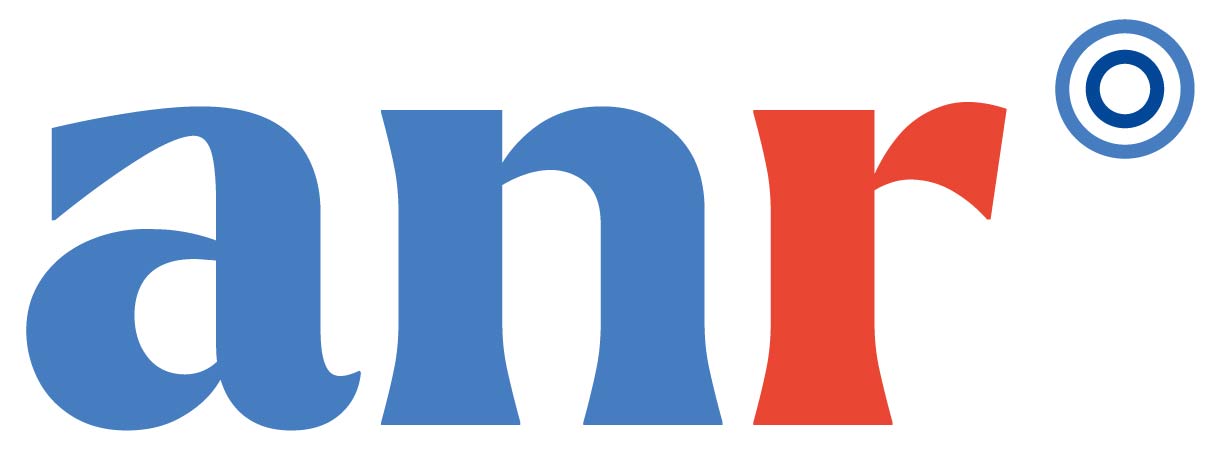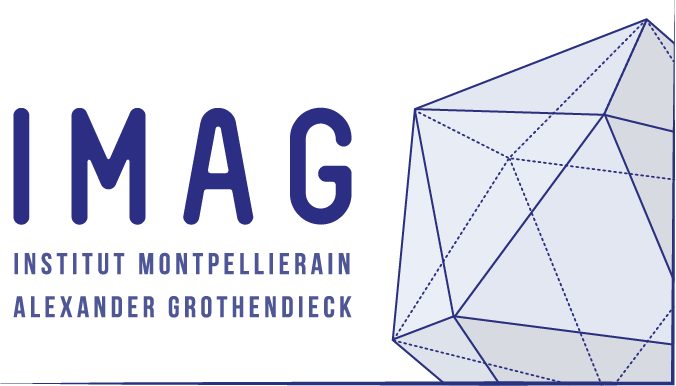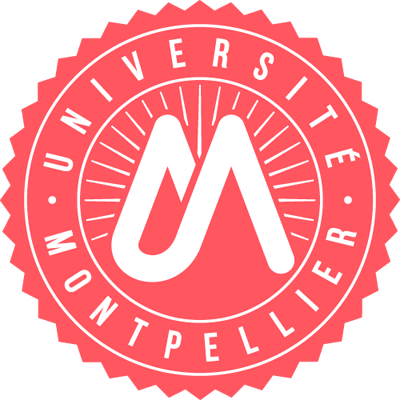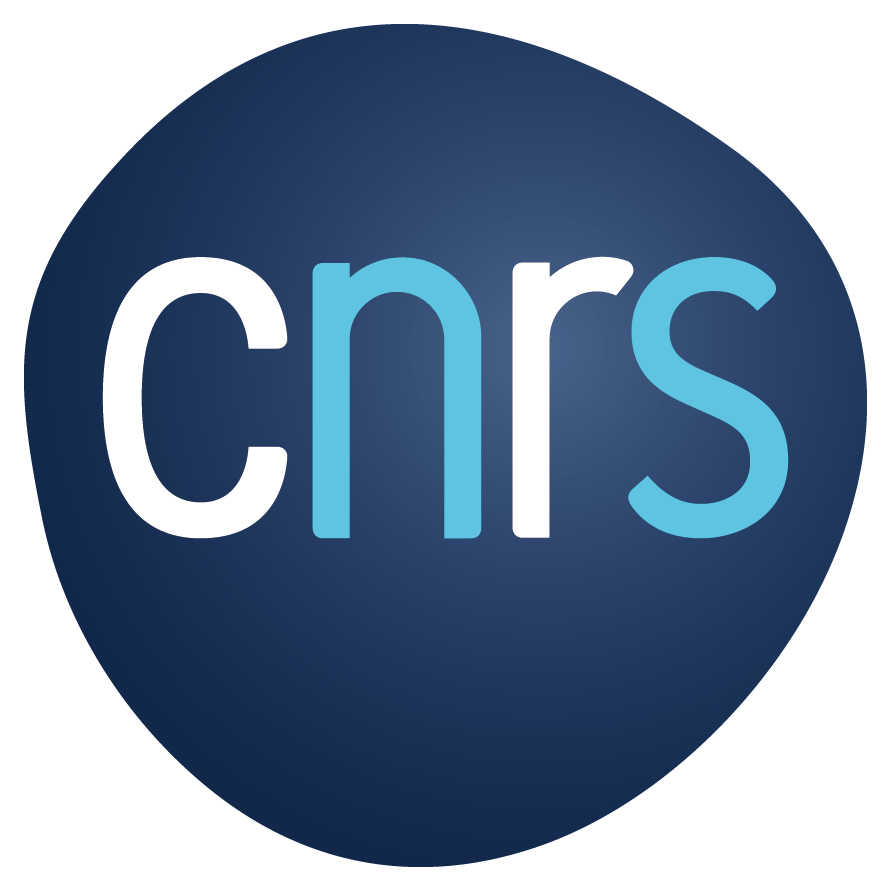
Speakers
Léa Villeneuve
Practical informations
Location:
Building 9, Room 109, then 430 Institut Montpelliérain Alexander Grothendieck Place Eugène Bataillon Université de Montpellier Place Eugène Bataillon 34095 Montpellier Cedex 5 (directions)
Dates:
March 23-24, 2023
Organization
Sponsors





Workshop FIBALGA 2023
March 23
09:00 Room 109 - Pascal Fong
Automorphism groups of \(\mathbb{P}^1\)-bundles over ruled surfaces
Abstract: The classification of algebraic subgroups of groups of birational transformations have been initiated by the Italian school of algebraic geometry. More than a hundred years ago, Enriques and Fano have listed the maximal connected algebraic subgroups of the group of birational transformations of \(\mathbb{P}^3\). A proof of their classification has been given by Umemura, through a series of four articles and using analytic methods. More recently, Blanc, Fanelli and Terpereau have mostly recovered this classification using an algebraic approach. Let \(C\) be a smooth projective curve of positive genus. In this talk, we adapt the strategy of Blanc, Fanelli and Terpereau to study the pairs \((X,\mathrm{Aut}^\circ(X))\), where \(X\) is a \(\mathbb{P}^1\)-bundle over a ruled surface \(S\) (with \(S\) birational to \(C\times \mathbb{P}^1\)) and \(\mathrm{Aut}^\circ(X)\) is a maximal connected algebraic subgroup of \(\mathrm{Bir}(C\times \mathbb{P}^2)\). This is a work in progress.
10:30 Room 109 - Enrica Floris
Normal split subvarieties of a homogeneous manifold
Abstract: Van de Ven proved in 1959 that the subvarieties of the projective space whose normal short exact sequence splits are linear subspaces. In this talk I will explain a generalisation of this result to rational homogeneous varieties: a subvariety of a rational homogeneous variety whose normal exact sequence splits is a rational homogeneous variety. This is a joint work with Andreas Hoering.
11:45 - 13:15 Lunch at the University restaurant
13:30 Room 430 - Ronan Terpereau
Homogeneous instanton bundles on Fano threefolds of Picard number one
Abstract: An instanton bundle on the projective space is a stable rank 2 vector bundle with zero first Chern class and which satisfies a certain cohomological vanishing condition. Instanton bundles originally appeared in the 1970s in Yang-Mills theories (a family of theories used to describe fundamental force fields in physics), but they have since attracted much attention from the mathematical community ; in particular, for questions related to the geometry of their moduli spaces. The notion of instanton bundle was extended in the early 2010s to certain Fano threefolds by Daniele Faenzi and Alexander Kuznetsov. In this talk, we will be interested in \(G\)-homogeneous (i.e. invariant for the action of an algebraic group \(G\)) instanton bundles on Fano varieties of Picard number 1 when \(G\) acts with an open orbit. This is a joint work with Daniele Faenzi.
14:45 Room 430 - Aurore Boitrel
Automorphisms groups of del Pezzo surfaces
Abstract: Del Pezzo surfaces play an important role in the classification of algebraic projective surfaces up to birational transformations. Over an algebraically closed field \(\mathbf{k}=\overline{\mathbf{k}}\), it is classically known that a del Pezzo surface is either isomorphic to \(\mathbb{P}^{2}\) or to \(\mathbb{P}^{1} \times \mathbb{P}^{1}\) or to the blow-up of \(\mathbb{P}^{2}\) in \(1 \leq r \leq 8\) points in general position, and in this case, automorphisms groups of del Pezzo surfaces are well known and have been completely described by I. Dolgachev and V. Iskovskikh. In particular, there is only one isomorphism class of del Pezzo surfaces of degree \(5\) over \(\mathbf{k}=\overline{\mathbf{k}}\). In this talk, we will focus on del Pezzo surfaces of degree \(5\) defined over a perfect field. Over a perfect field \(\mathbf{k}\), there are a lot of extra surfaces (as we can already see for del Pezzo surfaces of large degrees over \(\mathbb{R}\)), and the classification as well as the description of the automorphisms group over \(\mathbf{k}\) is reduced to understanding the actions of the Galois group \(\operatorname{Gal}(\overline{\mathbf{k}}/\mathbf{k})\) on the graph of \((-1)\)-curves. This is what we will expose in this talk.
16:30 Room 430 - Adrien Dubouloz
Some test configurations for \(\mathbb{A}^{1}\)-cylindrical Fano varieties
Abstract: An anti-canonical \(\mathbb{A}^{1}\)-cylinder in a Fano variety \(X\) is a Zariski open subset \(U\) of \(X\) isomorphic to the product of the affine line \(\mathbb{A}^{1}\) with an affine variety and whose complement is the support of an effective anti-canonical divisor on \(X\). These cylinders are known to correspond to non-trivial homogeneous actions of the additive group \(\mathbb{G}_{a}\) on the spectrum of the anti-canonical \(R\) ring of \(X\). These actions determine in turn natural filtrations of \(R\) which, under suitable finite generation hypotheses, can be used through a canonical homogeneous Rees algebra construction to produce particular test configurations for the variety \(X\). The purpose of the talk is to present these different correspondences and constructions, to give some examples illustrating these notions and to ask and partially address some questions about the finite generation of the Rees algebras involved in these constructions. The material of the talk is based on a joint work not yet actually started with Kento Fujita, Isac Hedén and Takashi Kishimoto.
20:00 Dinner at Brasserie du Théâtre
March 24
09:00 Room 430 - Anna Bot
Survey on real forms
Abstract: A real form of a complex scheme \(X\) is a real scheme whose complexification is isomorphic to \(X\). In the last few years, there has been considerable progress in the understanding of how many nonisomorphic real forms a given complex variety can have. In the projective case, a variety can have at most countably many nonisomorphic real forms, where Lesieutre found the first example with infinitely many, and Dinh, Oguiso and Yu found a rational surface with infinitely many. No such restriction on the cardinality exists for affine or quasi-projective varieties, with examples of surfaces having uncountably many nonisomorphic real forms constructed recently. In fact, in the known examples, the real forms can be parametrised by a variety, where one has to be careful in formulating this intuitive notion. In this talk, I will survey the known results about real forms and discuss some open problems.
10:30 Room 430 - Léa Villeneuve
Automorphisms groups for a family of smooth horospherical varieties of rank 1
Abstract: In this talk, I will start by introducing the family of horospherical varieties, which is a subfamily of spherical varieties, and more precisely I will talk about smooth projective horospherical varieties of rank 1, with Picard group of rank 2, denoted by \(X.\) Using different methods, especially the Log MMP, I will study if the two closed orbits are stable or not, and I will compute \(\operatorname{Aut}^0(X)\).
11:45 - 13:15 Lunch at the University restaurant
Participants
| Name | Institution |
|---|---|
| Aurore Boitrel | Université d'Angers |
| Anna Bot | University of Basel |
| Thibaut Delcroix | Université de Montpellier |
| Adrien Dubouloz | Université de Bourgogne |
| Enrica Floris | Université de Poitiers |
| Pascal Fong | Université Paris Saclay |
| Tiago Duarte Guerreiro | University of Essex |
| Pierre-Louis Montagard | Université de Montpellier |
| Tran Trung Nghiem | Université de Montpellier |
| Michel Nguiffo Boyom | Université de Montpellier |
| Boris Pasquier | Université de Poitiers |
| Ronan Terpereau | Université de Bourgogne |
| Sofian Tur | Université de Montpellier |
| Vladimir Verchinine | Université de Montpellier |
| Léa Villeneuve | Université de Poitiers |
| Sokratis Zikas | Université de Poitiers |
| Susanna Zimmermann | Université Paris Saclay |